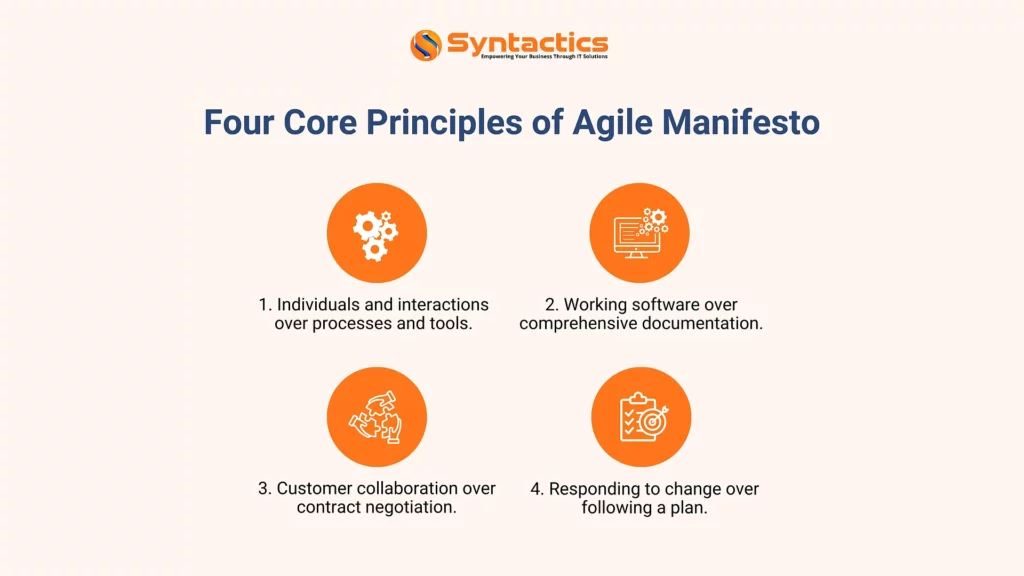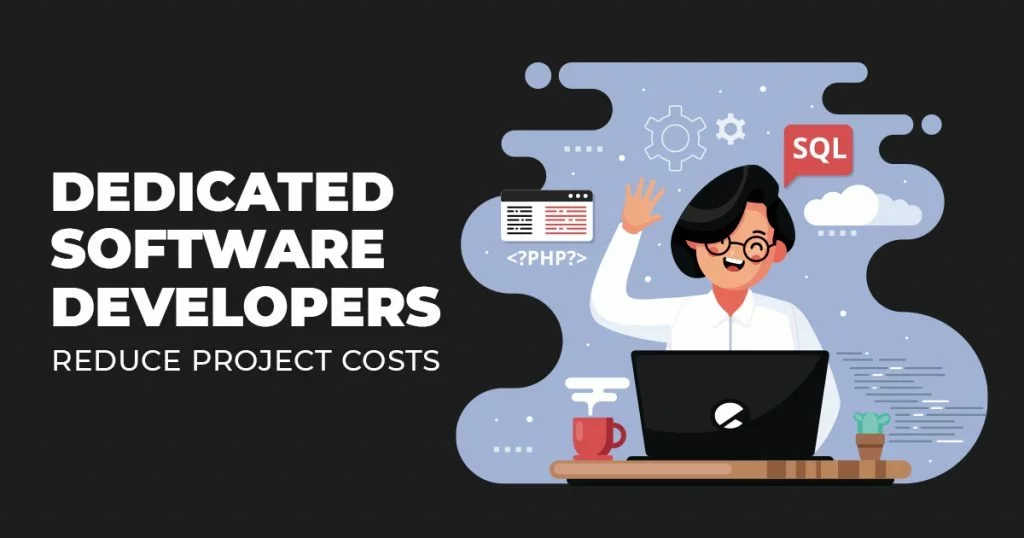
Agile Methodology: The Cost-Effective Approach in Business Software Development
Managing a project, like custom business software development, requires a flexible yet effective approach to deliver results. But, instead of waiting for the entire project to complete, breaking large tasks into smaller, more manageable phases can help the team to continuously refine and improve the product based on regular feedback. This is the concept of Agile methodology.
Agile is an effective approach that enables the software development team to respond quickly to changes and feedback, delivering products that align closely with set goals.
According to Agile Statistics You Need to Know, 59% of professionals reported that Agile methodology improved team collaboration. Meanwhile, 57% noted that the approach aligned better with organizational objectives.

Source: Zippia.
In addition, 88% of international experts surveyed believed that Agile enhances their quality of life, as revealed in TechReport’s Agile Statistics.
These figures show that Agile implementation has a positive impact on both software development teams and clients.
Understanding Agile Methodology
Agile is an iterative approach to business software development. Projects are broken into smaller, manageable “sprints,” enabling the team to adjust to the client’s changing requirements.
It’s specially designed to be more effective, resulting in faster turnaround times.
At its core, each sprint delivers a functional feature, allowing the team to test and refine their work. As a result, it allows the team to minimize risk, address issues early, and align deliverables closely with the client’s expectations.
Why Agile Methodology?
The flexibility of Agile empowers a development team to prioritize tasks based on evolving business needs. The constant feedback loop allows businesses to make adjustments promptly and launch features faster.
Overall, Agile ensures that the most important project features are delivered on time and reduces the risk of costly errors or backlogs.
On the other hand, with the Waterfall methodology, custom software development teams follow a strictly linear sequence. It requires them to complete one phase before moving on to the next one. As a result, it becomes difficult for the team to incorporate changes once a stage is completed.
What Are the 4 Core Principles of Agile Methodology?
Agile is guided by four core principles outlined in the Agile Manifesto. These include the following:

Most Common Types of Agile Methodologies
The Agile methodology consists of different frameworks, with the most common being the following:
Kanban
The Kanban method is an efficient way to identify roadblocks and visualize the volume of work being accomplished. Cards on Kanban boards represent each task, and columns represent each stage.
Developers from a custom software development company can move cards to reflect the current stage of a task.
Scrum
Scrum is the most used Agile methodology among small teams, which involves sprint planning and retrospectives.
Sprint planning starts when an event or stage kicks off, such as identifying the tasks to deliver. Meanwhile, a sprint retrospective is a recurring meeting to iterate on learnings from previous sprints to improve and simplify the next one.
Extreme Programming (XP)
While similar to Scrum, Extreme Programming (XP) is more technical in its approach. It focuses more on “how” the work will get done, especially when a custom software developer needs to quickly address a client’s project requests.
Adaptive Project Framework
The Adaptive Project Framework (APF) is applied when unknown factors show up at any time during project development. It focuses on a project’s resources rather than its needs, such as budget changes, timeline shifts, and team transitions.
Extreme Project Management
Extreme Project Management (XPM) is often used for complex projects characterized by significant uncertainty. This type of Agile methodology involves continuously adapting a process until it leads to the desired result.
It also involves a lot of spontaneous changes and shifts in strategy.
Advantages of Agile Methodology in Business Software Development
Agile is the most popular choice in software development since software is constantly changing. The needs of the project also have to change with it.
Here are the other reasons why many development teams and companies embrace the Agile approach:
Faster Turnaround Time
By using the Agile methodology, the team can effectively reduce time and complete projects more rapidly.
Stakeholders can provide feedback in real-time, and the custom software development company can produce working demos or prototypes throughout the process.
Client-Centric
An Agile method focuses on client collaboration and feedback as project development progresses. The team can prioritize important features related to the client’s needs. When these client’s needs change, the team can shift to a different focus.
Adaptable and Flexible
The main benefit of Agile is the ability to shift strategies quickly without disrupting project flow, whether due to client requirements or market trends. Thus, the project can pivot without stalling the timelines or budgets.
Cost-Efficiency of Agile Methodology
Apart from the advantages discussed earlier, Agile methodology significantly reduces project costs while improving overall efficiency. The development team can deliver high-quality projects while clients can maximize their Return-on-Investment (ROI).
Here are the top cost-saving benefits:
Reduced Project Overhead and Administrative Costs
Agile reduces the need for extensive documentation and complicated processes. The development team can then focus on delivering functional increments, simplifying project management, and lowering administrative costs.
Optimized Resource Utilization and Improved Productivity
A software development team that uses the Agile approach works collaboratively. This way, they can optimize the project management timeline and resources, boosting productivity.
As such, all stakeholders can make decisions and solve problems immediately. So, Agile methodology prevents resources from being wasted on unnecessary tasks throughout the business software development process.
Minimized Rework and Maintenance Expenses
Through Agile, custom software development services can conduct continuous software testing and Quality Assurance (QA) to collect feedback throughout project development.
The methodology allows early detection and error resolution to prevent project failure or backlogs, lowering the cost of future fixes and maintenance.
Enhance Apps With a Software QA Specialist!
Lower Opportunity Costs and Faster ROI
Agile enables faster project completion, allowing businesses to enter the market sooner and generate revenue. This also reduces opportunity costs.
Additionally, Agile development teams identify and solve issues early on, leading to higher customer satisfaction and loyalty.
Best Practices for Implementing Agile Methodology
Implementing Agile can provide remarkable results. For instance, according to 20+ Agile Statistics, building a strong Agile culture within your team or organization can increase commercial performance by as much as 237%.
Here’s how a custom software development company embraces Agile methodology:
Begin With Proper Training.
Agile is at its most effective when the entire team understands its core principles, methodology, and tools. Therefore, it’s vital to train the team so that they can confidently apply Agile throughout the development process.
Enhance Team-Client Collaboration.
Agile thrives when both parties prioritize collaboration and communication. This way, everyone is on the same page regarding project goals.
Consider conducting daily stand-ups, meetings, and open channels for instant feedback. That way, you can employ immediate solutions and improve the development process.
Break Work Into Manageable Sprints.
Agile allows custom software development services to divide projects into short, focused sprints. Each sprint can help developers determine clear objectives and deliverable features.
Thus, it helps the team to continuously assess projects, make adjustments, and improve each sprint.
Measure and Adapt.
After each sprint, it’s vital to track key metrics to evaluate and identify which areas need improvement. Hence, you can conduct retrospectives to reflect on the team’s performance and address challenges.
Continuous feedback and core adaptation to Agile enables the team’s evolution to become more effective.
Focus on Delivering Value.
Agile emphasizes delivering value. The development team can prioritize tasks that provide immediate benefit to the client or end-user.
As such, it allows the team to release projects on time, gain real-time feedback, and build additional features based on the user’s needs.
Embrace Agile Methodology for Custom Business Software Development
Agile methodology is a dynamic, client-centric approach that helps development teams deliver valuable products more efficiently.
On the other hand, this iterative approach allows clients to get a transparent view of their projects. Therefore, it enhances productivity and cost-effectiveness while ensuring client satisfaction.
Look for a professional software development company in the Philippines that effectively implements Agile methodology as part of their strategy to deliver quality outcomes.
Frequently Asked Questions About Agile Methodology
What are the key benefits of Agile methodology for small businesses?
The Agile methodology offers small businesses a variety of key benefits. It enhances flexibility, speeds up time-to-market, and improves cost efficiency. Teams that use Agile can quickly adapt to changes while focusing on essential tasks.
These advantages make Agile especially effective in dynamic environments where adaptability and resource optimization are crucial.
How cost-efficient is Agile methodology compared to other development methodologies like Waterfall?
Agile is more cost-efficient because it reduces waste and costly fixes.
For instance, while Waterfall requires extensive upfront planning, Agile allows for adjustments throughout the development process based on feedback and changing requirements.
Waterfall has rigid, linear workflows, while Agile‘s iterative approach allows quicker issue resolution, which minimizes risks and expenses.
What best practices can businesses adopt to ensure successful Agile implementation in their projects?
Here are some best practices to ensure successful Agile implementation:
- Define clear project goals and priorities.
- Foster collaboration through open communication and regular meetings.
- Invest in Agile-specific training on roles, tools, and processes.
- Continuously gather and incorporate stakeholder feedback.
- Be prepared to adapt to changes based on evolving requirements and insights from iterative cycles.


















Comment 0